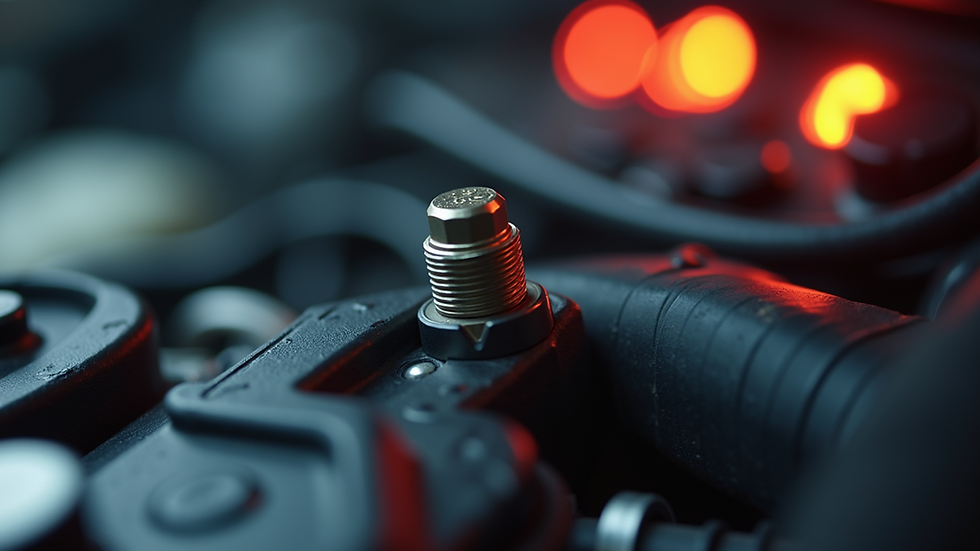How Accurately Calibrated Sensors Improve Vehicle Performance
- Swift Calibrations
- Jun 11
- 4 min read
In the rapidly evolving automotive industry, the integration of ADAS sensors has become a game changer for vehicle performance. These sensors play a critical role in enhancing various functions of a car, from driver assistance to safety features. In this post, we’ll explore how accurately calibrated sensors improve vehicle performance, discuss various types of sensors, and show you why sensor accuracy is paramount for today's advanced vehicles.
Understanding Sensor Accuracy
Sensor accuracy refers to how closely a sensor's readings match the true value of what it is measuring. In ADAS applications, accuracy is crucial because even minor discrepancies can lead to significant performance issues. For instance, consider an engine temperature sensor that measures inaccurately; if it registers a lower temperature than the actual condition, it might allow the engine to overheat, leading to severe damage. This is similar to ADAS sensors. If the computer or, "Brain," of the vehicle is receiving poor data from radars, cameras and other sensors, advanced driver assistance system performance will be negatively impacted.
Data from the National Highway Traffic Safety Administration (NHTSA) indicates that faulty sensors can contribute to vehicle malfunctions, making understanding sensor accuracy vital for drivers and manufacturers alike.

The Role of Sensors in Vehicle Performance
Accurate sensors contribute to multiple aspects of vehicle performance:
Fuel Efficiency: Oxygen sensors monitor the exhaust gases and help manage the fuel-air mixture in combustion engines, optimizing fuel consumption. A study by the U.S. Department of Energy found that faulty oxygen sensors can reduce fuel efficiency by as much as 40 percent.
Safety Features: Modern vehicles are equipped with various sensors, such as proximity sensors and lane-keeping assist systems, which improve safety. Accurate readings help these systems to function as intended, reducing accident rates significantly.
Dynamic Stability: Sensors that monitor wheel speed, steering angle, and lateral acceleration are essential for systems like electronic stability control (ESC). These systems prevent skidding and loss of control, helping maintain stability in adverse conditions.
Engine Performance: Sensors provide real-time data to the engine control unit (ECU), ensuring the engine operates at peak efficiency. This includes managing the ignition timing, fuel mixture, and other critical factors.

Types of Sensors Used in Vehicles
Understanding the various types of sensors can give insight into how they improve vehicle performance. Here are some commonly used sensors:
1. Temperature Sensors
Temperature sensors monitor the engine's temperature and help regulate cooling systems. If the system detects overheating, it can trigger the cooling system to engage, preventing damage.
2. Pressure Sensors
Pressure sensors are used to monitor oil, fuel, and air pressure within the engine. They provide vital information that ensures optimal performance and safety.
3. Speed Sensors
These sensors calculate the speed of the vehicle, enabling the ECU to adjust fuel mixture and improve fuel efficiency. They also contribute to safety features like anti-lock braking systems (ABS).
4. Wheel Position Sensors
Used mainly in advanced driver-assistance systems (ADAS), these sensors track the position of the wheels and help in functions like automatic braking or lane-keeping.
5. Proximity Sensors
Proximity sensors provide vital data for parking assistance and collision detection. They help the driver maintain an appropriate distance from obstacles, significantly enhancing safety.

The Impact of Accurate Sensors on Maintenance
To maintain vehicle performance, regular sensor calibration and testing are essential. This is where sensor accuracy service plays a key role. Regular service can help ensure that all sensors are functioning correctly, preventing issues in real-time monitoring and control.
Neglecting sensor maintenance can result in performance degradation, increased fuel consumption, and even safety hazards. For instance, a malfunctioning tire pressure sensor can lead to under-inflated tires, affecting fuel efficiency and causing premature tire wear.
Benefits of Regular Sensor Calibration
Optimal Performance: Well-calibrated sensors provide accurate data and help the vehicle achieve optimal performance.
Cost Savings: Investing in sensor calibration prevents larger repair costs down the line. For example, a misaligned wheel position sensor can lead to uneven tire wear, requiring costly replacements.
Increased Safety: Regularly calibrated sensors reduce the likelihood of accidents caused by sensor malfunctions, leading to safer driving experiences.
The Future of Sensor Technology in Vehicles
As the automotive industry continues to advance, the role of sensors will only grow. With the rise of electric vehicles (EVs) and autonomous driving technologies, the demand for accurate sensors will become even more critical.
Emerging Technologies
LiDAR and Radar: These sensors are essential for autonomous vehicles, allowing them to navigate their environment safely. They provide real-time data to make necessary adjustments while driving.
AI Integration: Artificial intelligence can enhance the accuracy and responsiveness of sensor data, making vehicles smarter and more efficient.
Vehicle-to-Everything (V2X) Communication: This technology allows vehicles to communicate with each other and infrastructure, improving safety and reducing traffic congestion. Accurate sensors will be integral to this communication.
Conclusion
The integration of accurate sensors in vehicles is vital for optimizing performance, enhancing safety, and ensuring cost-effective maintenance. As technology continues to advance, so too will the importance of sensor accuracy. By understanding and maintaining these sensors, drivers can ensure they get the most out of their vehicles while contributing to a safer driving environment. Keep an eye on how sensor technology evolves, as it holds the key to the future of transportation.






Comments